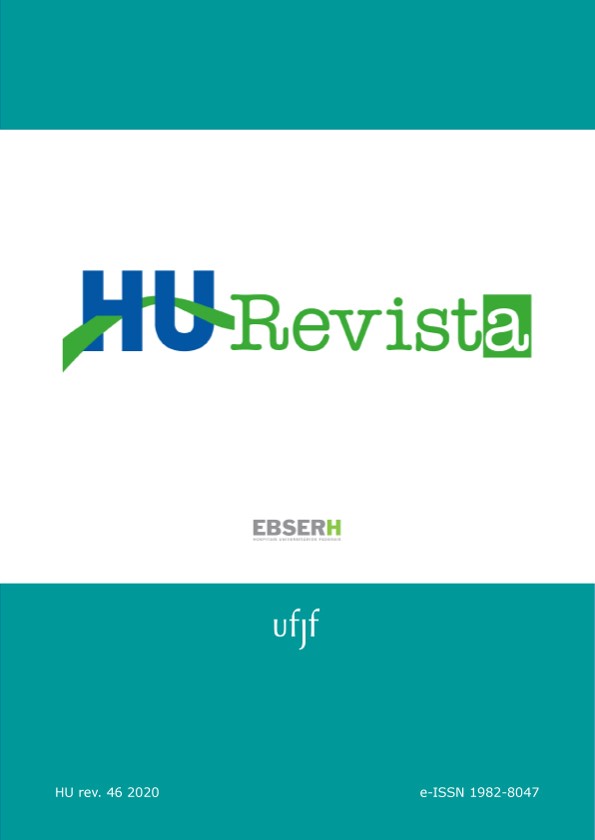Performance stability analysis of young freestyle swimmers between 2007-2010
DOI:
https://doi.org/10.34019/1982-8047.2020.v46.29307Keywords:
Athletes, Efficiency, SwimmingAbstract
Introduction: Swimming stability analysis can be conducted at all times of the athlete's career, allowing to elucidate continuous improvement or the moment a plateau is reached in the results of a race. Objective: To analyze the stability of the performance of freestyle swimmers during 4 years. Material and Methods: Quantitative study and historical survey. Data were obtained from the 50m, 100m and 200m free trials of the state federation's website. A total of 78 swimmers (50m = 52; 100m = 19; 200m = 7) participated in the sample from 2007 to 2010. The analysis was performed by means of mean stability, intraclass correlation coefficient (ICC), and normative stability, analyzed by the Pearson correlation coefficient (r), in addition to the analysis of the variation in performance, repeated measures ANOVA and the relative variation in performance (∆%) between seasons. Results: They showed an improvement in swimmers' performance over time (13,3% - 50m; 13,6% - 100m and 15,4% - 200m) and the stability during the 2007-2010 season expressed by the ICC was high: 0.90 (95% CI: 0.66-0.96) at 50m; 0.81 (95% CI: 0.34-0.94) at 100m; 0.83 (95% CI: 0.38-0.97) at 200m. Conclusion: Most athletes maintained improvement in results at all distances.
Downloads
References
Lätt E, Jürimäe K, Cicchella A, Purge P, Jürimäe T. Physical development and swimming performance during biological maturation in young female swimmers. Coll Antropol. 2009; 33(1):117-22.
Maglischo EW. Nadando o mais rápido possível. Barueri: Manole; 2010.
Costa MJ, Bragada JA, Marinho DA, Reis VM, Silva AJ, Barbosa TM. Longitudinal assesment of swimming performance in the 200-m freestyle event. Open Sports Sci J. 2010; 3(1):92-4. doi: 10.2174/1875399X010030100092.
Colwin CM. Nadando para o século XXI. São Paulo: Manole; 2000.
Costa MJ, Bragada JA, Marinho DA, Lopes VP, Silva AJ, Barbosa TM. Longitudinal study in male swimmers: a hierachical modeling of energetics and biomechanical contributions for performance. J Sports Sci Med. 2013; 12(4):614-22.
Fernandes R, Barbosa T, Vilas-Boas JP. Fatores cinentropométricos determinantes em natação pura desportiva. Rev Bras Cinentropom Desempenho Hum. 2005; 7(1):30-4.
Lätt E, Jürimäe J, Haljaste K, Cicchella A, Purge P, Jürimäe T. Longitudinal development of physical and performance parameters during biological maturation of young male swimmers. Percept Mot Skills. 2009; 108(1):297-307.
Caputo F, Oliveira MFM, Denadai BS, Greco CC. Fatores intrínsecos do custo energético da locomoção durante a natação. Rev Bras Med Esporte. 2006; 12(6):399-404. doi: 10.1590/S1517-86922006000600019.
Samulski DM. Psicologia do esporte: manual para a educação física, psicologia e fisioterapia. São Paulo: Monole; 2009.
Ferreira RM, Penna EM, Costa VT, Moraes LCCA. Nadadores medalhistas olímpicos: contexto do desenvolvimento brasileiro. Motriz. 2012; 18(1):130-42.
Souza MC, Forjaz CLM, Eisenmann J, Maia JAR. A noção de tracking e sua aplicação à Educação Física e ao Esporte. Rev Bras Cineantropom Desempenho Hum. 2015; 17(3):337-46.
Stewart AM, Hopkins WG. Consistency of swimming performance within and between competitions. Med Sci Sports Exerc. 2000; 32(1):997-1001.
Malina RM. Physical growth and biological maturation of young athletes. Exerc Sport Sci Rev. 1994; 22(1):389-433
Barreiros A, Côté J, Fonseca AM. From early to adult success: Analysing athletes’ progression in national squads. Eur J Sport Sci. 2014; 14(1):S178-182. Doi: 10.1080/17461391.2012.671368
Moesch K, Elbe A, Wikman JM. Late specialization: the key in centimeters, grams, or seconds (cgs) sports. Scand J Med Sci Sports. 2011; 21(6):282-90.
Dormehl SJ, Robertson SJ, Williams CA. How confident can we be in modelling female swimming performance in adolescence? Sports (Basel). 2016; 4(1):16. doi:10.3390/sports4010016.
Dormehl SJ, Robertson SJ, Williams CA. Modelling the Progression of Male Swimmers' Performances through Adolescence. Sports (Basel). 2016; 4(1):2 doi: 10.3390/sports4010002.
Trewin CB, Hopkins WG, Pyne DB. Relationship between world-ranking and Olympic performance of swimmers. J Sports Sci. 2004; 22(4):339-45.
Costa MJ, Marinho DA, Reis VM, Silva AJ, Marques MC, Bragada JA, Barbosa TM. Tracking the performance of world-ranked swimmers. J Sports Sci Med. 2010; 9(3):411-7.
Pyne DB, Trewin CB, Hopkins WG. Progression and variabilty of competitive performance of Olympic swimmers. J Sports Sci. 2004; 22(7):613-20.
Malina RM. Adherence to physical activity from childhood to adulthood: a perspective from tracking studies. Quest. 2001; 53(3):346-55.
Ferguson CJ. An effect size primer: A guide for clinicians and researchers. Prof. Psychol: Res. Pract. 2009; 40(5):532-8.
Santos DS, Medeiros AGA. O discurso midiático e as representações sociais do esporte: o atleta como modelo de comportamento. Pensar a Prát. 2009; 12(3):1-11.
Costa MJ, Marinho DA, Bragada JA, Silva AJ, Barbosa TM. Stability of elite freestyle performance from childhood to adulthood. J Sports Sci. 2011; 29(11):1183-9.
Downloads
Published
How to Cite
Issue
Section
License
Cessão de Primeira Publicação à HU Revista
Os autores mantém todos os direitos autorais sobre a publicação, sem restrições, e concedem à HU Revista o direito de primeira publicação, com o trabalho licenciado sob a Licença Creative Commons Attribution que permite o compartilhamento irrestrito do trabalho, com reconhecimento da autoria e crédito pela citação de publicação inicial nesta revista, referenciando inclusive seu DOI.









